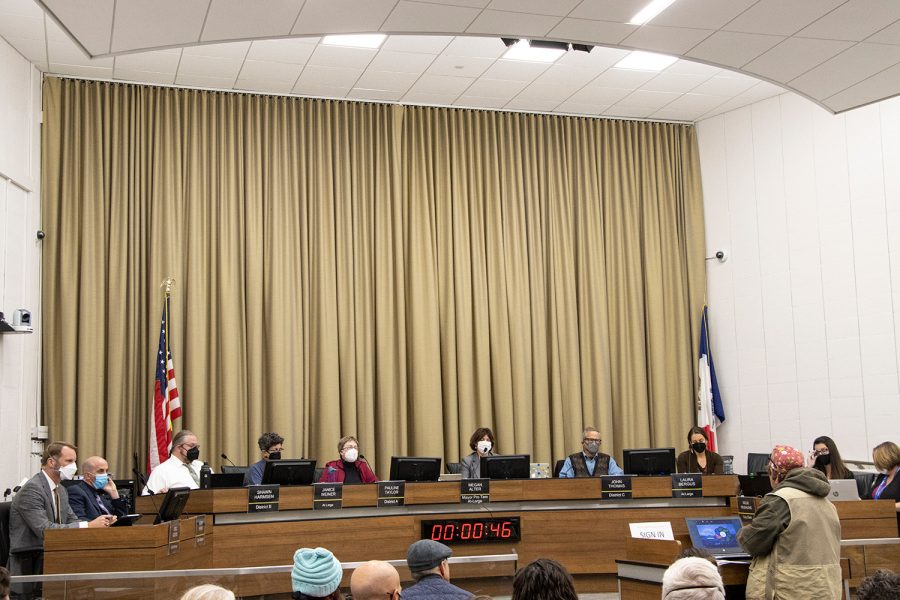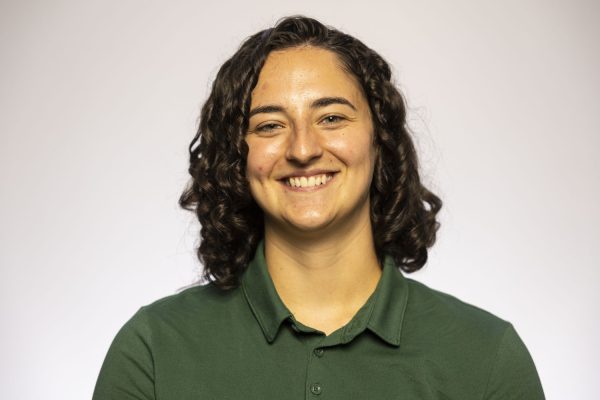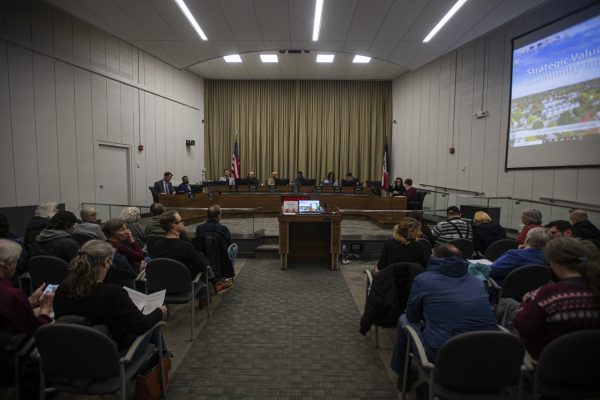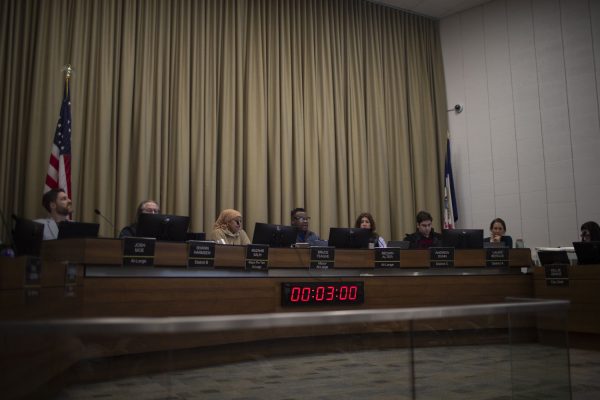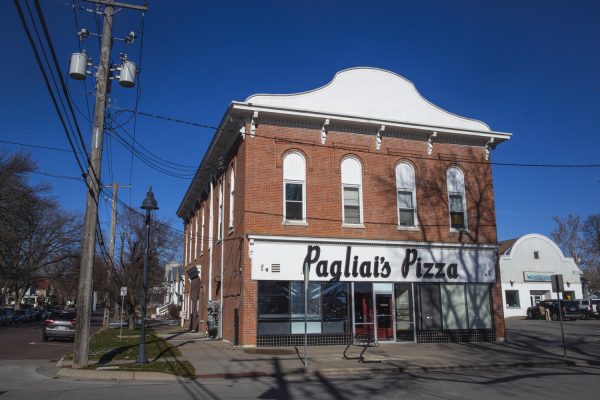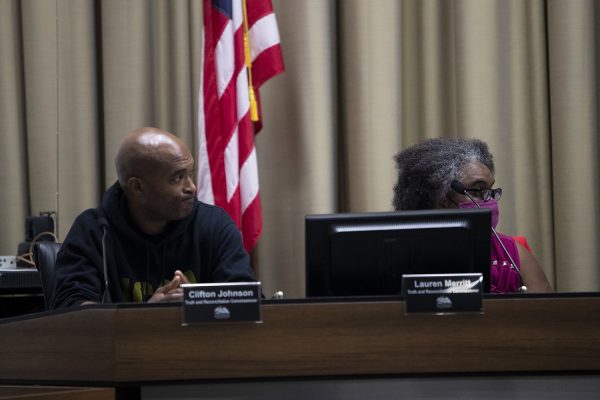Iowa City updates Southwest District plan to be more sustainable, equitable
The plan, created in 2002, will now feature updated background information and new policies that will guide future land development to be more in line with the city’s current goals.
Iowa City Council listens to speaker at City Council on Tuesday, Oct. 18, 2022.
January 31, 2023
Residents in the Iowa City Southwest District could soon see improvements to affordable housing, pedestrian-friendly streets, and easier-to-access commercial areas.
The district, which covers the land that is south of Melrose Avenue, west of the Iowa River, and north of Highway 1 until the western edge of Iowa City, could see development starting as soon as 2023. The update will specifically address the Rohret South subarea, which is a subset of land within the Southwest District.
The Iowa City City Council unanimously approved an update to the city’s Southwest District Plan on Jan. 24, which aims to make future land and building development in the area more sustainable and equitable.
Iowa City Associate Planner Kirk Lehmann said in an interview with The Daily Iowan the update will consist of two main goals: guiding future land use to be more in line with the city’s current wants.
The updated background information will include new changes to the city that have happened in recent years, such as the city’s updated Comprehensive Plan and revised transit routes, Lehmann said.
In terms of guiding future land development, Lehmann said the city has been shifting to form-based zoning as opposed to traditional zoning, so this update will reflect that shift.
Traditional zoning focuses on separating land based on its uses, such as separating a residential area from an industrial area, Lehmann said. However, it can be harmful by grouping residential areas by density, such as single-family units.
This can be harmful to both sustainability and affordable housing efforts the city has been trying to make in accordance with its strategic plan, according to Lehmann.
“It’s hard to get a range of different housing types that might fit people at different stages in their life. It can be hard to have affordable housing in that context,” Lehmann said. “And so, looking at a form-based land use, we’re switching from looking exclusively at the uses and looking more at the feel of an area where we’re looking at more than just single-family uses.”
Form-based land use, which was put into Iowa City code sections in 2021, would focus more on what a city looks like from the perspective of the public, such as pedestrian-friendly streets, diverse housing types, and easier-to-access commercial areas, Lehmann said.
RELATED: Local emerging artist to design bus stop bench in Iowa City South District
Lehmann added the changes to the Southwest District Plan will be more long-term and can take anywhere from 20 to 40 years to be fully implemented. The timeline of this is dependent on how many additional public hearings and meetings the Planning and Zoning Commission deems necessary moving forward.
However, development in the Rohret South area can take place as soon as 2023. This is dependent on how long it takes for construction on the extension of a sewer line underneath Highway 218 to be completed, Lehmann said.
“As the city, we’re hoping to see stuff move forward sooner rather than later,” Lehmann said. “We’re excited to see what kind of neighborhoods we can get built under a new kind of planning rationale.”
At the meeting, several city councilors expressed their excitement for this plan as well.
“I’m just really over the moon about what we have in front of us here today,” Councilor Andrew Dunn said. “We have a great example of really smart planning that I think very closely gets us to the ideals of our strategic plan.”
Mayor Bruce Teague said this update is helpful in letting the community know what to expect in terms of future development.
“I think that’s been one of the biggest challenges that we’ve faced; everybody doesn’t know what to expect,” Teague said. “That’s what I really appreciate about a form-based code model that we’re now switching to.”



